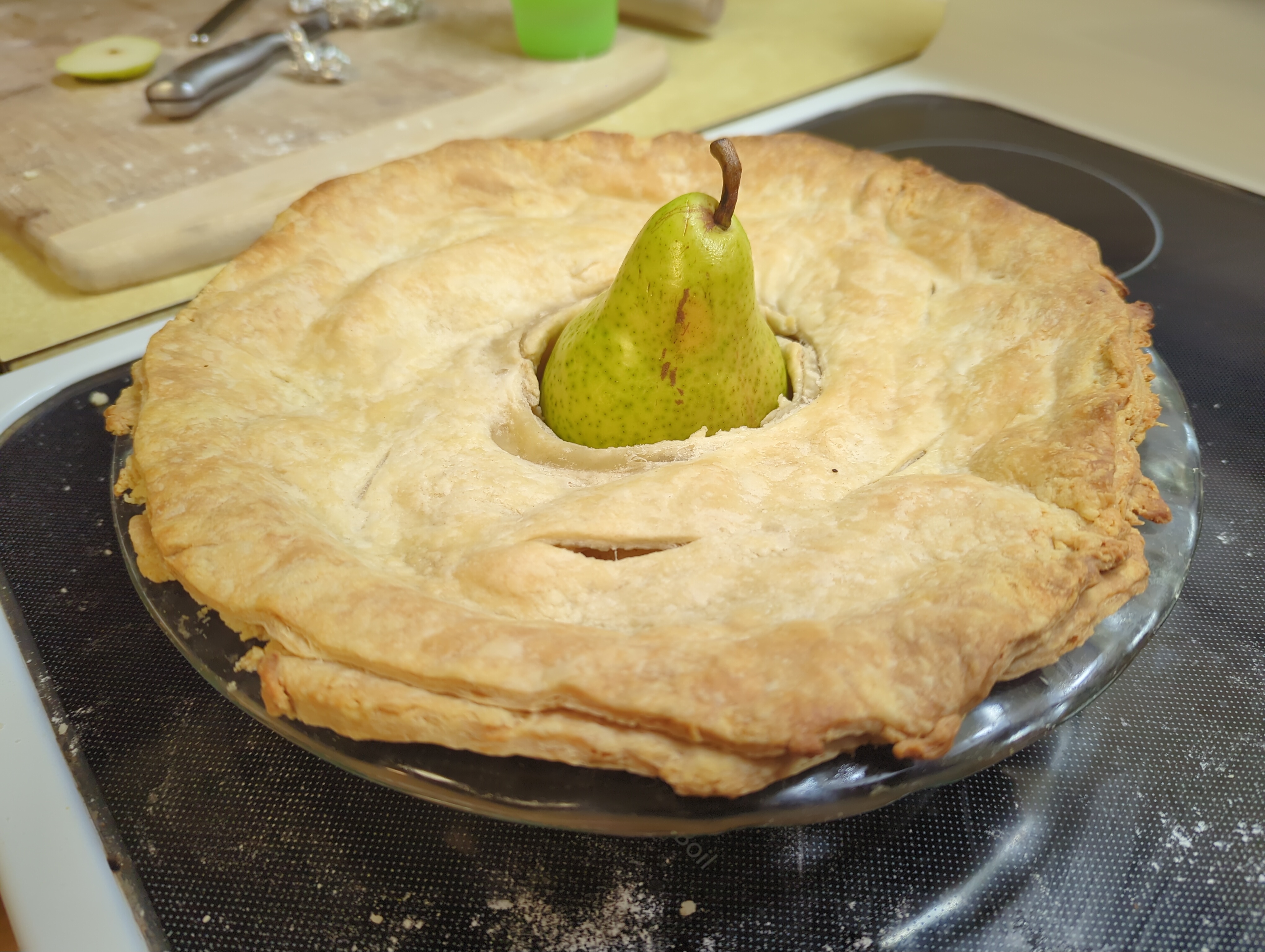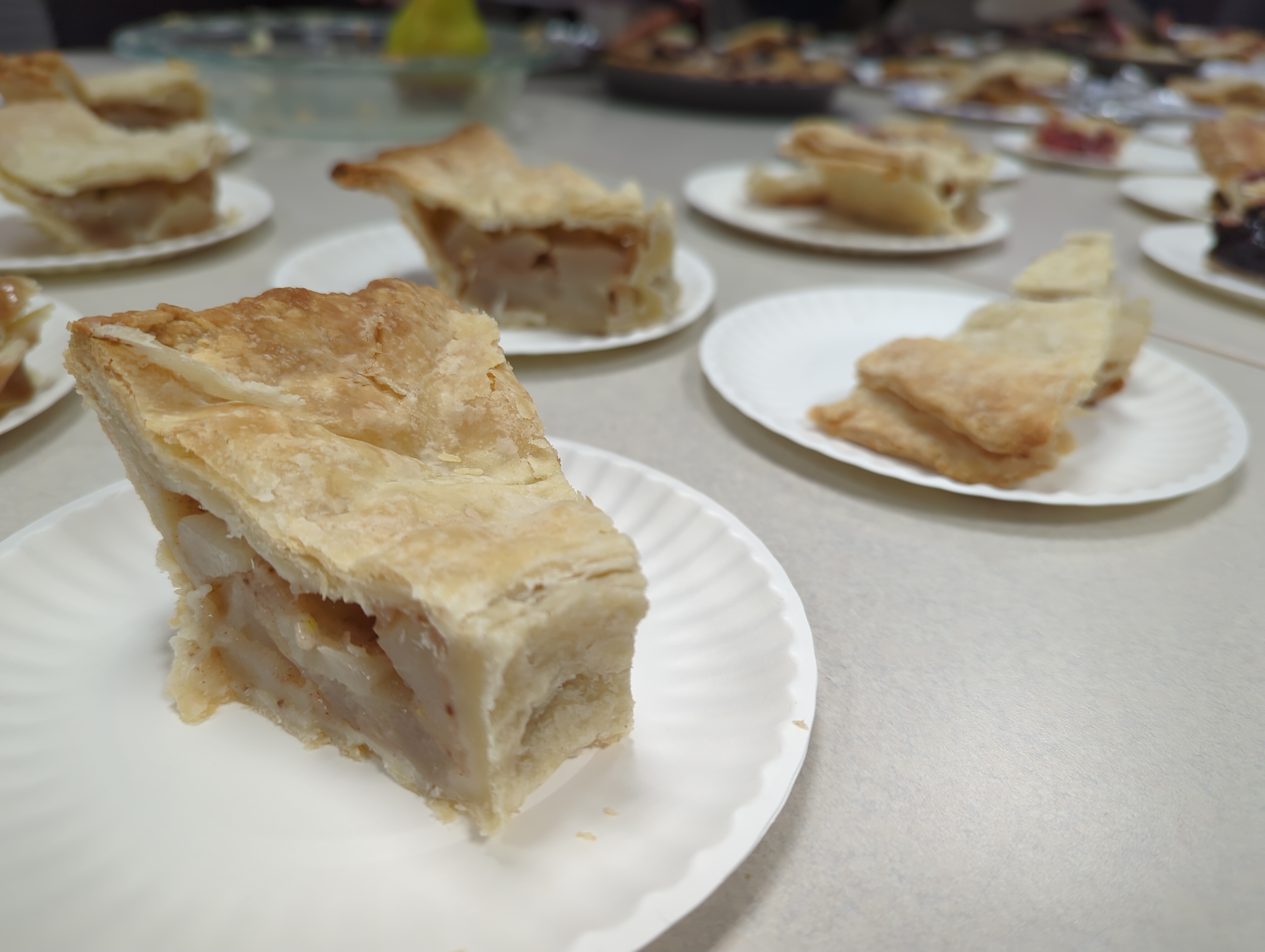The Arctic Circle Theorem
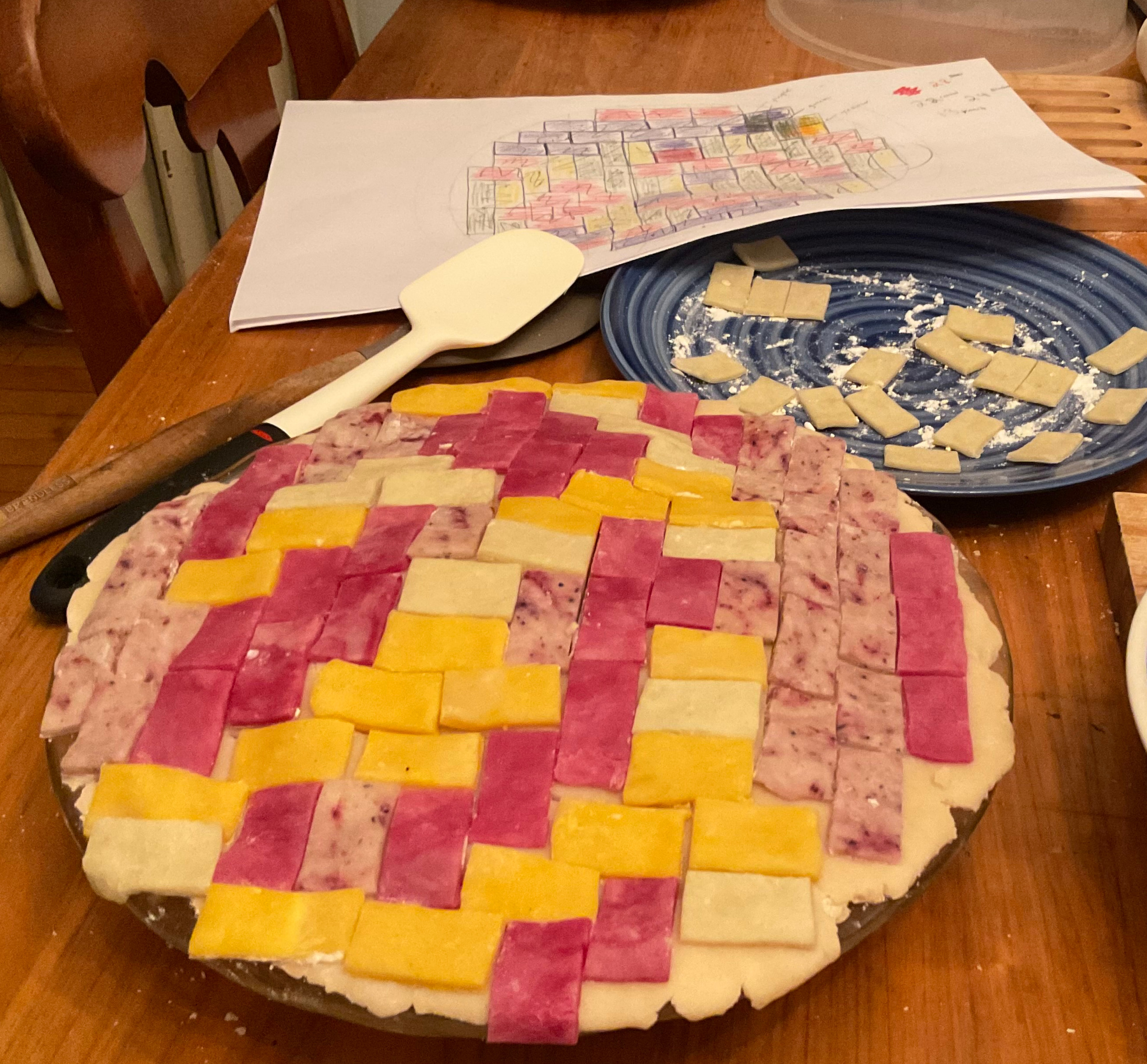

Type 11 Pentagonal Tiling
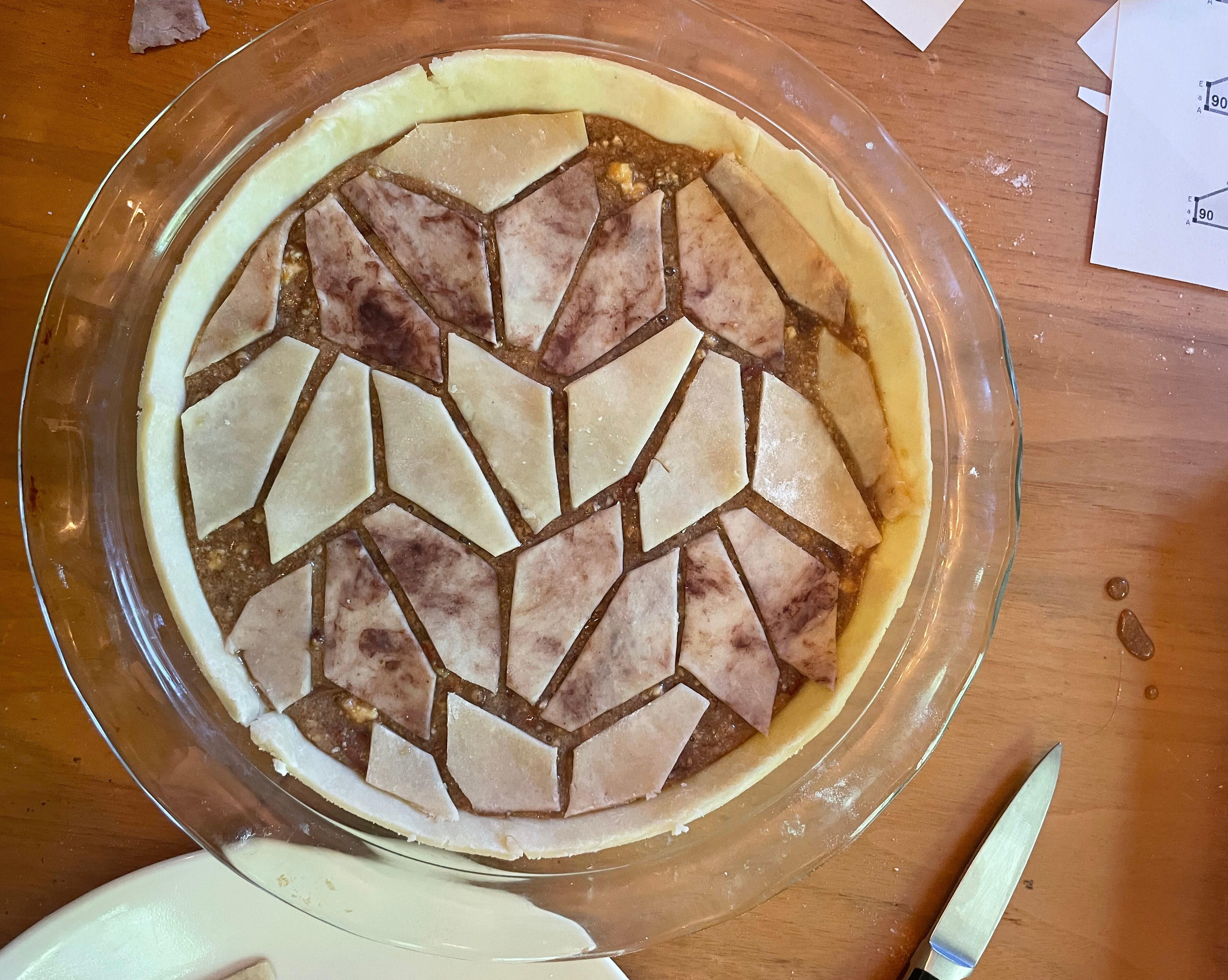
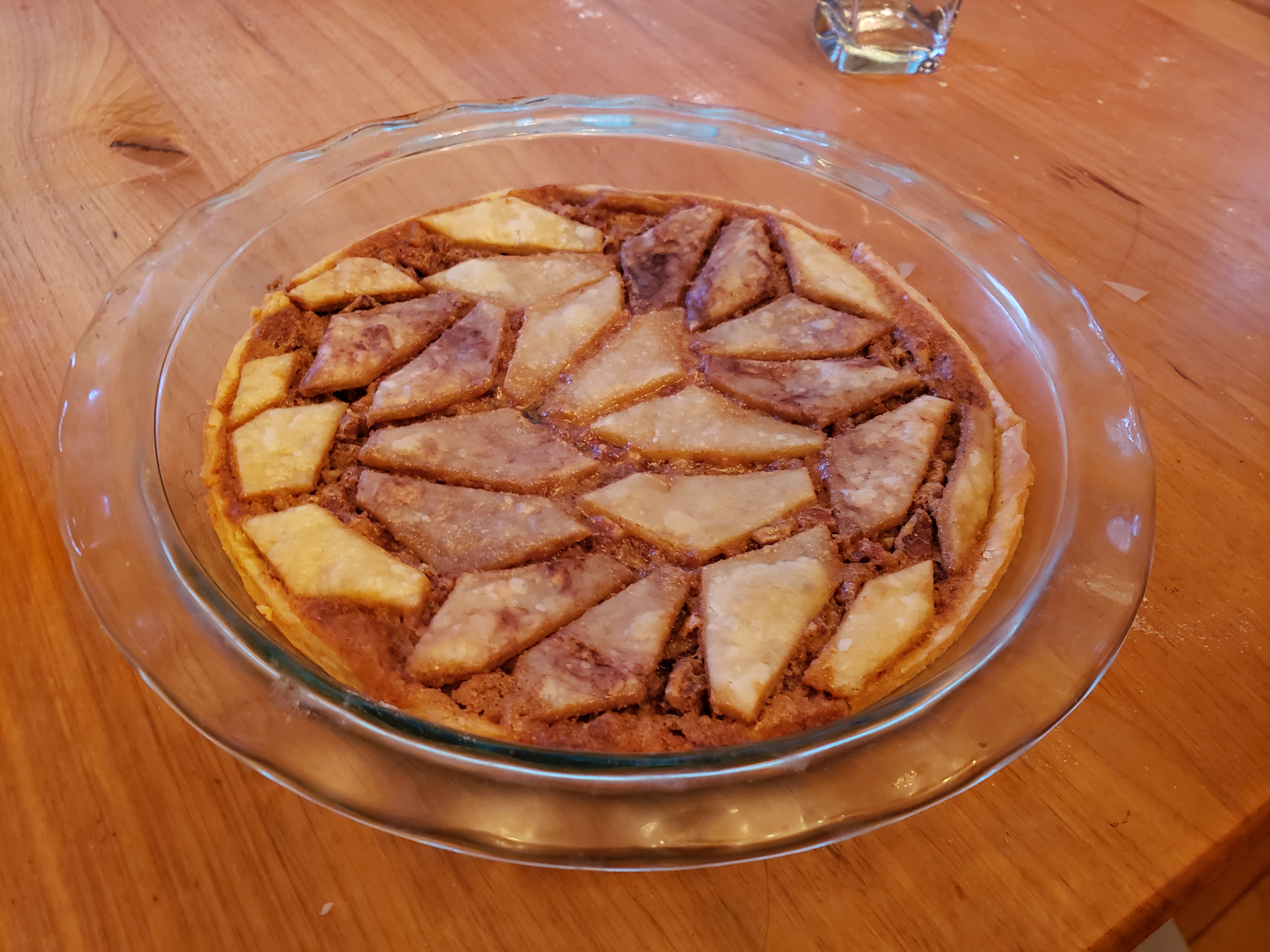
Aperiodic Monotile

Plancherel Measure
The Plancherel measure is a probability measure on integer partitions where a partition whose diagram has more standard fillings is more likely to appear. The measure is closely related to questions about random permutations like the expected length of a longest increasing subsequence. You can check out a more detailed description and a Sage notebook I used for sampling the random partition for this pie.
The pie, which was baked for pi day on March 14, 2024, is chocolate and peanut butter based on this recipe. Similar to the arctic circle theorem, there is interesting limiting behavior as the partitions grow very large, but I wasn't able to cut the chocolate squares small enough to capture this limit shape on the pie.
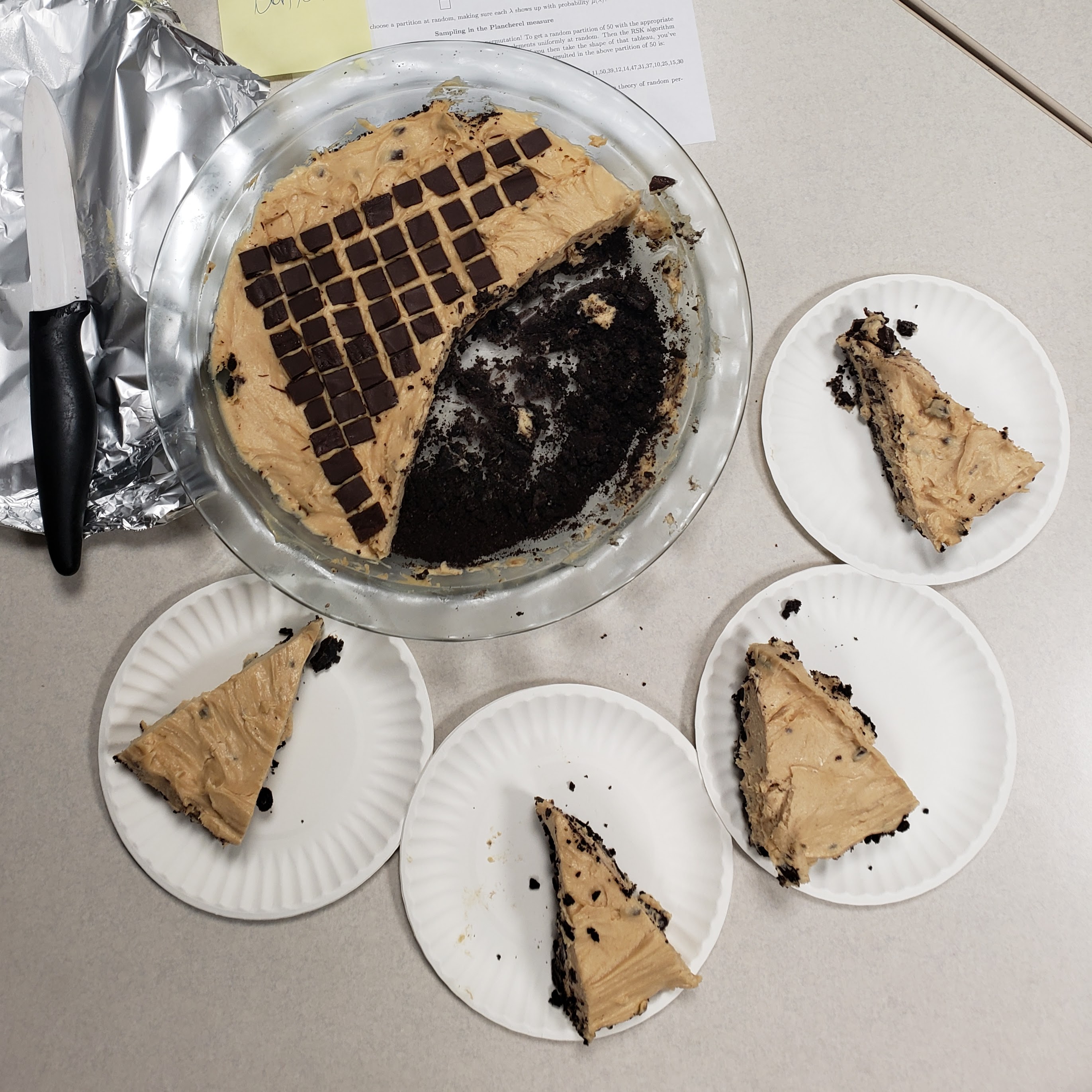
Young's Lattice
Pies often have a lattice on top, so I decided to decorate this apple pie with a small subset of Young's lattice. This partially ordered set is an important object in the representation theory of the symmetric group. The boxes of the Young diagrams on this pie are created with beet-dyed dough.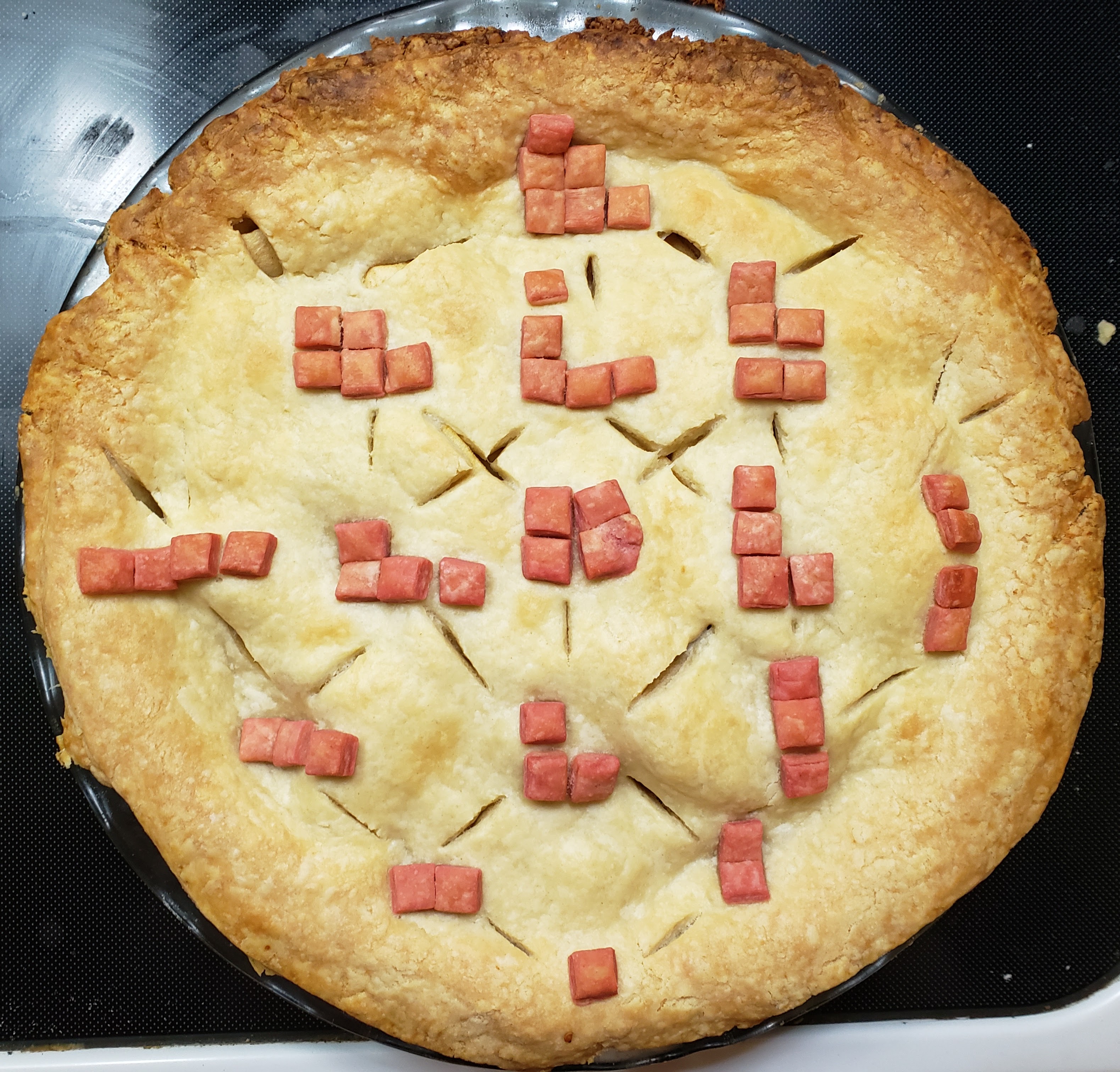
Nontrivial \(\pi_1\) Pie
For a topological space \(X\) (if that term is unfamiliar to you, think of a shape like a sphere or a donut) and a point \(x\in X\), its fundamental group \(\pi_1(X;x)\) consists of all loops in the space starting and ending at \(x\) where two loops are considered equivalent if one can be deformed to another via a relationship called homotopy. The fundamental group is called trivial if every loop can be contracted to a single point.
I baked this pear pie for pi day 2025, but the idea originated from two Oberlin students (Sams Niemann and Thiel). If \(X\) is taken to be the filling of the pie, then \(X\) is topologically equivalent to a solid torus (i.e. a donut). Hence, its fundamental group is \(\pi_1(X;x)\cong\mathbb{Z}\). Try to think of a loop through the filling that can't be squeezed down to a point without leaving the filling!
